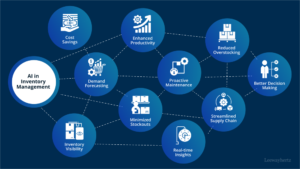Is Converged Infrastructure the Future of the Data Center?

If the term ‘converged infrastructure’ (also called integrated systems or unified computing) sounds like a mix of grid, cloud, utility, on-demand and shared computing services, you’re right. However, this complexity doesn’t seem to bother customers, especially small and midsize enterprises. But will this trend continue?
Ten years can seem like 10 lifetimes if you’re a little kid trying to catch up to your big brother or a writer considering the history of the Internet.
If you work in IT networking, however, the last 10 years hasn’t changed much. You still have to deal with siloed legacy infrastructure that takes time to manage, requires multiple teams to provision and deploy, eats up too much power and, thanks to sunk costs and scarce budgets, is hard to upgrade.[ Check out our 12 most powerful hyperconverged infrasctructure vendors. | Get regularly scheduled insights by signing up for Network World newsletters. ]
[EXCLUSIVE: Strategic guide to converged infrastructure]
Virtualization and automation were supposed to relieve some of this burden. However, those two technologies site higher up the data center layer cake. Basic block and tackling must still be done more or less by hand when new services, storage and servers are being provisioned.
This is where converged infrastructure (CI) comes into play.
Converged Infrastructure: Share Resources, Deploy Quickly[ Get certified as an Apple Technical Coordinator with this seven-part online course from PluralSight. ]
Hewlett-Packard coined the term three years ago. Gartner calls it integrated systems, while Cisco Systems calls it the unified computing system (UCS). Regardless of the lingo, the idea is the same: Roll compute, storage and networking into a self-provisioning pool of shared resources that can be pre-configured to drop into your data center. That way, it’s up and running in hours or days, not weeks or months.
Add single-pane-of-glass management consoles and reference architectures, including HP Cloud Maps and Cisco Flexpod, for common applications such as SAP, Siebel, Oracle and Microsoft SharePoint, and you’ve got an approach to adding services and applications that’s attracting attention.
“Customers are wild about it,” says Andrew Neff, a Gartner vice president and investment analyst in the Technology and Service Provider group. Converged infrastructure represents about 6 percent of data center spending, he says, “but it’s growing at about a 50 percent clip over the past year.”
Analysis: Virtualization Shakes Up How Servers Are Sold
In three-and-a-half years, this growth has propelled Cisco into the No. 2 blade vendor spot in North America (behind HP). Prior to the introduction of its UCS offering, Cisco didn’t even sell blades, says Satinder Sethi, vice president of the company’s data center group. Cisco now claims 20,000 blade customers, a $1.6B run rate, and a 23.5 percent market share that it says it took from competitors such as Dell, IBM and HP.
“Our conception of UCS almost five years ago was based on a very specific need we were seeing in the data center at the time,” Sethi says. “Customers had the network, compute and storage, but any time they had to deliver a service, it took…sometimes months to get that server-provisioned, network-connected, storage-connected application deployed.”
Converged Infrastructure Breaks Down or Builds Silos
Today’s vendor pitch is about “the business” and the need to spin applications and services faster to meet the demands placed on IT by the cloud, big data, BYOD, ERP, CRM, BPM and so on. But this all has a familiar ring to it. Not too long ago, virtualization and cloud were going to accomplish much of the same thing by letting IT dole out apps and services using computing power from across the data center.
Although virtualization has increased utilization rates and saved capital expenses, this didn’t quite work out. Virtual machine sprawl and multiple hypervisors from Microsoft, VMware and other have become a IT management headache all their own. Meanwhile, private clouds are often isolated into single racks by hardwired data center infrastructures.
What’s different about CI, vendors say, is its capability to break down these silos by flattening data center architectures so compute, networking and storage are abstracted from the CPUs, racks, cabling, controllers and switches. Abstract the operating systems from the CPUs, add a single point of management, and you are taking the first steps on the road to software-defined networking, or SDN, says Duncan Campbell, HP’s vice president, Enterprise Group Solutions and Marketing Strategy.
It’s like virtualization 2.0-only for workloads, not servers. “People are getting tired of the do-it-yourself model,” Campbell says. “They’re saying, ‘Hey, guess what? I can add more value with my team instead of jut bolting stuff together.’ The dialogue is shifting from the DIY more toward these integrated systems.”
Analysis: HP Aims Three-Part Effort at Network Virtualization
While converged infrastructure seems to solve many provisioning problems, for the moment it’s being deployed as little islands of capability for ERP, SharePoint or virtual desktop infrastructure. This isn’t inherently a bad thing-these applications have to be provisioned somehow, after all-but if CI isn’t embraced as a design concept, then you may still end up with a lot of siloed capability employed to meet very specific use cases, not a data center fabric that responds dynamically and uses all available resources.
“CI is definitely…catching customers’ interest,” says Jason Needham, vice president of product management and marketing at F5 Networks, whose application acceleration products need to work with all data center architectures. “It’s an opportunity for them to look at things differently in their infrastructure. But the reality is, they are not in a rip-and-replace scenario.” Converging the controller concept with SDN is a promise that’s yet to be fulfilled, he says.
What’s Old Is New Again
If this sounds a little like utility computing, grid computing, shared services, SOA or the cloud, then you’re on the right track.
What’s different with today’s converged infrastructure is the stateless, preconfigured, pre-optimized nature of the offerings that often come preloaded with the apps you want and, if you’ve gotten that far, plug into your existing data center fabric.
IBM PureData and Oracle Exadata, for example, targets big data challenges. Cisco offers everything from reference architectures, which you can use to build your own best-of-breed integrated infrastructures, to the VCE partnership that includes Cisco blades, VMware and EMC storage, to another Cisco-VMware offering in which Hitachi Data Systems provides the SAN. HP’s offerings are similarly open to different hypervisor, storage and networking combinations.
Commentary: BMC and VCE Partnership Shows Consortium Is Gaining Power
Converged infrastructure, at its core, eliminates the busywork of provisioning servers, SAN, LAN and applications, which takes multiple teams of people, and replaces it with plug-and-play options that come ready to go (more or less) out of the box.
“The focus of the customer at the end of the day is TCO,” Gartner’s Neff says. If converged infrastructure can lower TCO and still meet ROI requirements, he adds, then it will certainly fit customers’ needs.
On the other hand, companies face challenges when buying CI systems. In a hyper-scale environment, for example, buying a few integrated racks won’t help you much. Also, if you constantly buy lots of gear, then the ability to play one vendor against another to get a better price is negated, Neff says.
The sweet spot for converged infrastructure will probably be small and midsized enterprises with a limited IT staff but a base of demanding constituents who need new services and applications on a regular basis. And the time for CI may have come. HP, Cisco and other vendors all have thousands of customers, and the market is growing fast.
If IT is really about supporting the business, then converged infrastructure is appealing, if for nothing else than for not reinventing the wheel but selling it attached to a car instead. Looking at the business case, Cisco’s Sethi says, it comes down to deploying services quickly. “In the world we are living in, everyone’s trying to come up with applications, and they don’t have five months to get a service online.” With converged infrastructure, he says, “[you] can spin up applications faster, so that appeals to the CIOs.”
Allen Bernard is a Columbus, Ohio-based writer who covers IT management and the integration of technology into the enterprise. You can reach him viaemail or follow him on Twitter @allen_bernard1. Follow everything from CIO.com on Twitter @CIOonline, Facebook, Google + and LinkedIn.
Read more about high performance computing in CIO’s High Performance Computing Drilldown.
This story, “Is Converged Infrastructure the Future of the Data Center?” was originally published by CIO.
Source : https://www.networkworld.com



